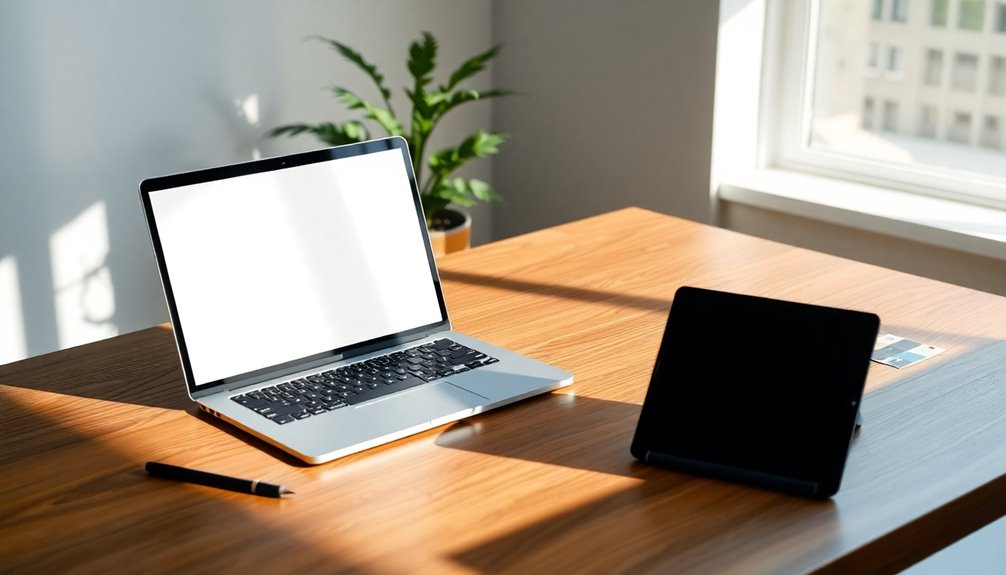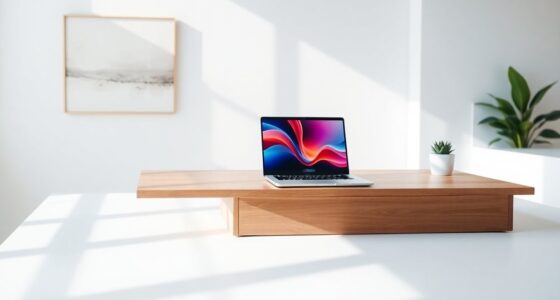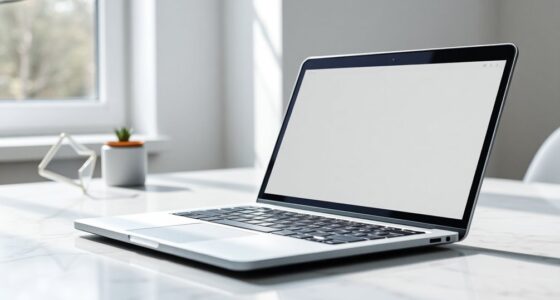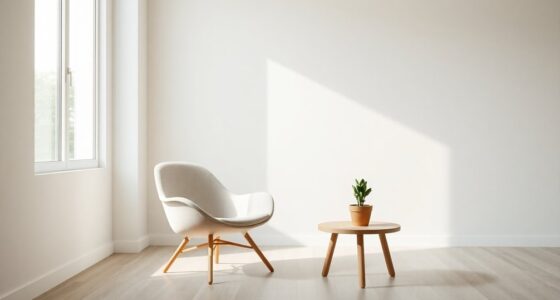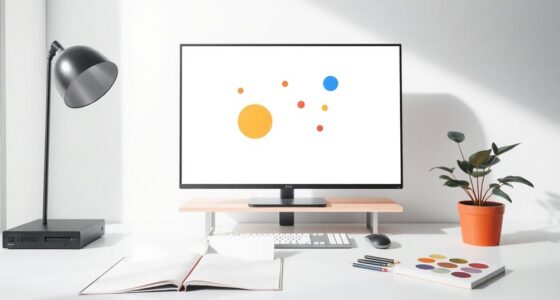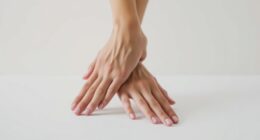For minimalist creatives, clean design tools focus on simplicity and intuitive interfaces. Top options include Canva for easy social media graphics, Inkscape for precise vector editing, and Adobe Express for user-friendly layouts. If you're looking to invest, consider Adobe Photoshop for advanced projects or Figma for collaborative work. These tools streamline your design process and maintain a cohesive aesthetic. Discover more about selecting the perfect software and enhancing your creative experience with the right tools.
Key Takeaways
- Canva offers user-friendly, minimalist templates ideal for social media and quick design projects, making it perfect for beginners.
- Inkscape is a powerful free vector design tool with precise editing capabilities suited for more intricate designs.
- Adobe Express combines ease of use with visually appealing layouts, catering to those seeking streamlined design processes.
- Figma facilitates real-time collaboration, allowing teams to work together seamlessly on minimalist design projects.
- Serif Affinity Designer 2 provides a one-time purchase option, blending vector and raster graphics for versatile design solutions.
Essential Features of Clean Design Tools
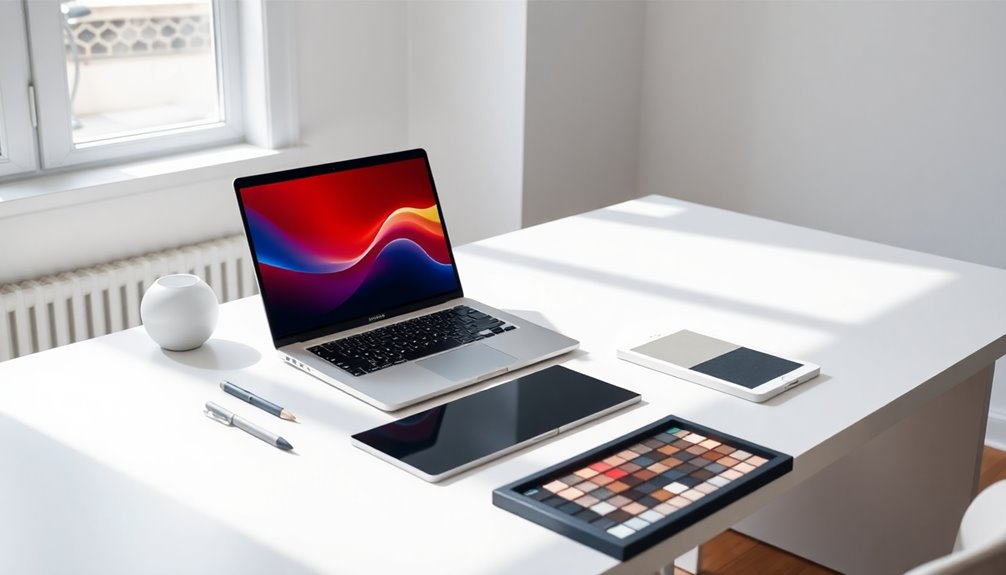
When it comes to clean design tools, simplicity is key. You want design tools that streamline your creative process without overwhelming you.
Look for an intuitive interface that allows for easy navigation and quick access to essential features. Customizable templates can help you kickstart your projects, while straightforward typography and a cohesive color palette guarantee professional-looking graphics.
Additionally, collaborative design options are vital, letting you work seamlessly with your team in real-time. Tools like Serif Affinity Designer 2 focus on vector graphics, allowing you to create sharp, scalable designs that adhere to minimalist principles. A holistic SEO approach emphasizes user experience, which is essential for maintaining user engagement with your designs.
Best Free Minimalist Design Software

- Canva: This easy-to-navigate graphic design software features minimalist templates and tools, ideal for creating social media graphics without advanced skills.
- Inkscape: As a free, open-source vector design tool, Inkscape supports various file formats and offers precise editing capabilities for scalable graphics.
- Adobe Express: With its user-friendly interface, this free version provides minimalist design tools that help you create visually appealing layouts effortlessly.
These creative tools not only enhance your design but also keep your projects streamlined and effective. Additionally, using HEPA filters in your workspace can promote a healthier environment, boosting your creativity and focus.
Explore these options to see which fits your style best!
Top Paid Options for Minimalist Creatives
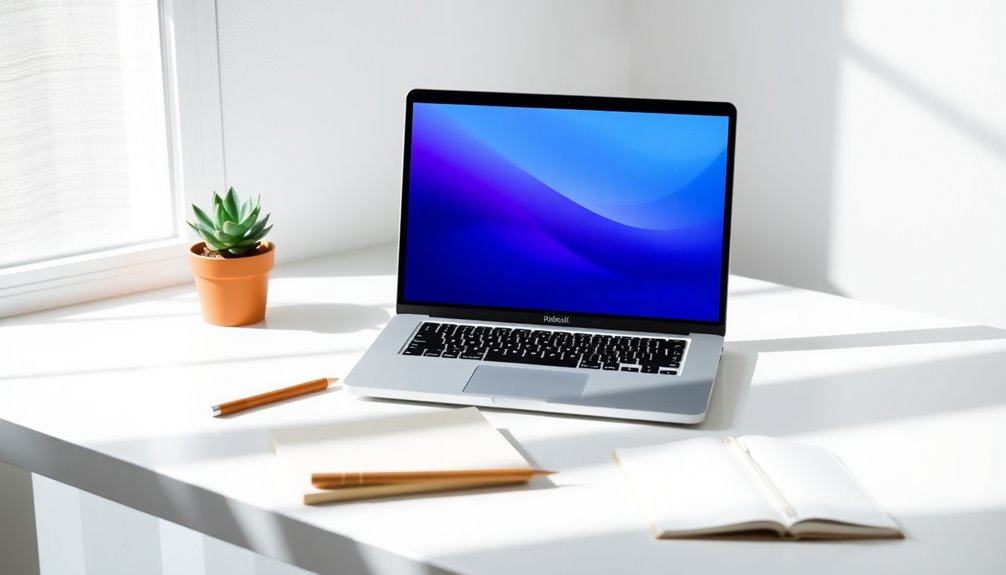
Minimalist creatives often seek tools that streamline their workflow while delivering high-quality results.
Adobe Photoshop stands out with its powerful features, ideal for intricate minimalist design projects, available at $59.99/month.
If you need vector graphic tools, Adobe Illustrator is a solid choice at $20.99/month, ensuring precise and scalable designs.
For a subscription-free alternative, consider Serif Affinity Designer 2, which combines vector and raster graphics for clean projects at a one-time cost.
CorelDRAW Graphics Suite also caters to minimalist designers with its intuitive interface and professional-grade tools, offered through a one-time purchase or subscription.
Finally, Figma supports real-time collaboration, making it perfect for teams focused on simple, effective designs, with paid options starting at $12/month. Additionally, tools like color accuracy can significantly enhance the visual appeal of minimalist designs.
User-Friendly Interfaces for Simplified Design
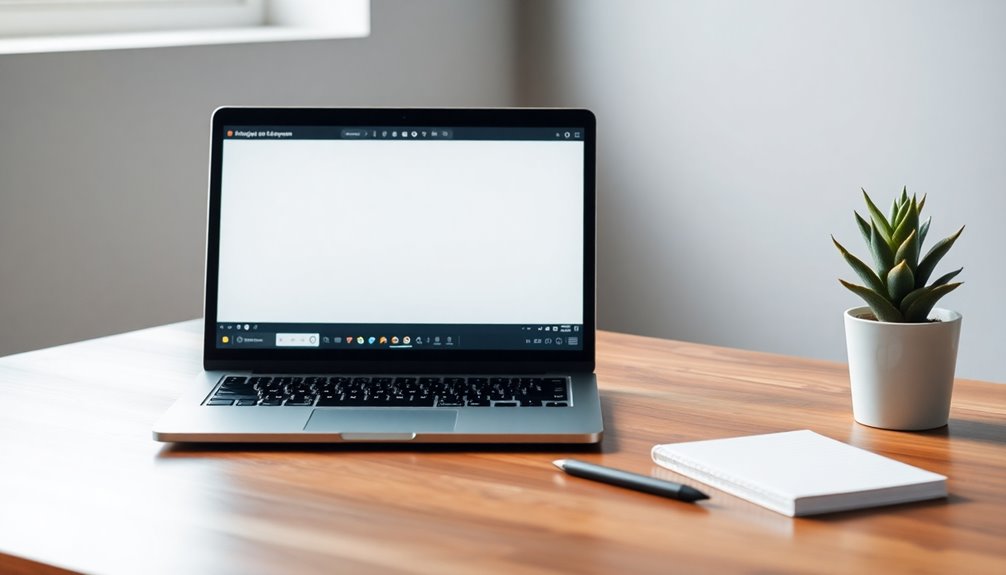
How can you elevate your design projects without overwhelming complexity? Embracing user-friendly interfaces in design tools makes all the difference.
These tools help you create stunning visuals for your design work, whether you're into photo editing or crafting graphics. Here are three standout options:
- Canva: An online graphic design tool with intuitive drag-and-drop features that anyone can master quickly.
- Adobe Firefly: Leverages AI to automate repetitive tasks, letting you focus on the creative side of simplified design.
- Serif Affinity Designer 2: Offers powerful features with easy layouts, reducing the learning curve for beginners.
Additionally, using these tools from a comfortable ergonomic workspace can further enhance your creativity and productivity.
These user-friendly options guarantee that minimalist creatives can confidently explore their artistic potential without unnecessary hassle.
Collaboration Tools for Minimalist Projects
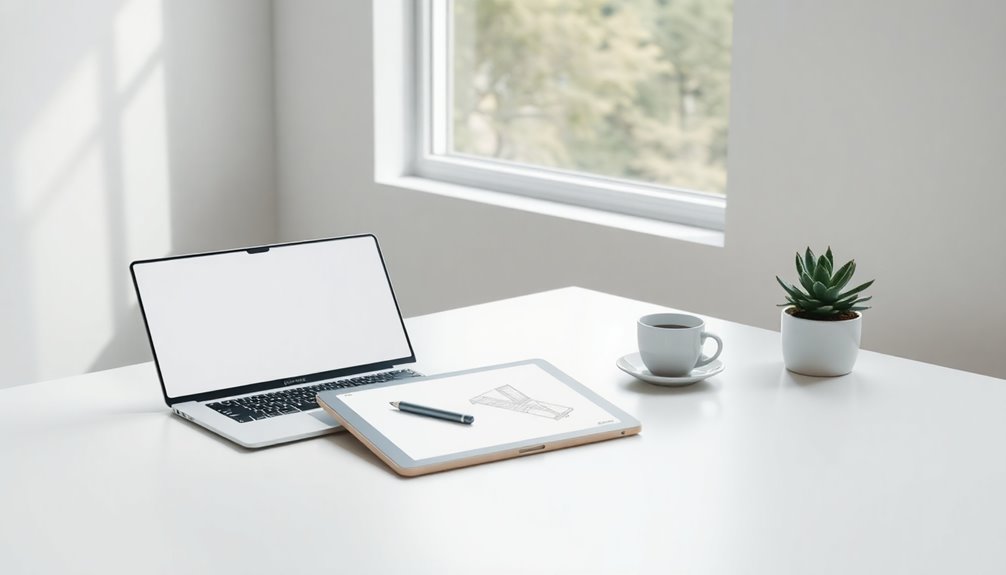
While diving into collaborative design projects, choosing the right tools can streamline your workflow and enhance creativity.
Collaboration tools like Figma enable real-time teamwork, allowing you and your team to edit designs simultaneously, which is essential for minimalist projects demanding quick iterations.
Penpot, an open-source design and prototyping tool, keeps your workspace clean and organized, promoting collaboration among product teams.
Uizard simplifies the design process with its AI-powered interface, helping you prototype efficiently without clutter.
Mockplus offers an online collaborative design environment tailored for high-fidelity prototypes, ensuring a minimalist focus throughout your workflow.
Finally, tools like Zeroheight help create living style guides, ensuring all team members adhere to minimalist design principles during collaboration. Additionally, incorporating energy-saving features in your design process can lead to more sustainable project outcomes.
Mobile Apps for On-the-Go Design
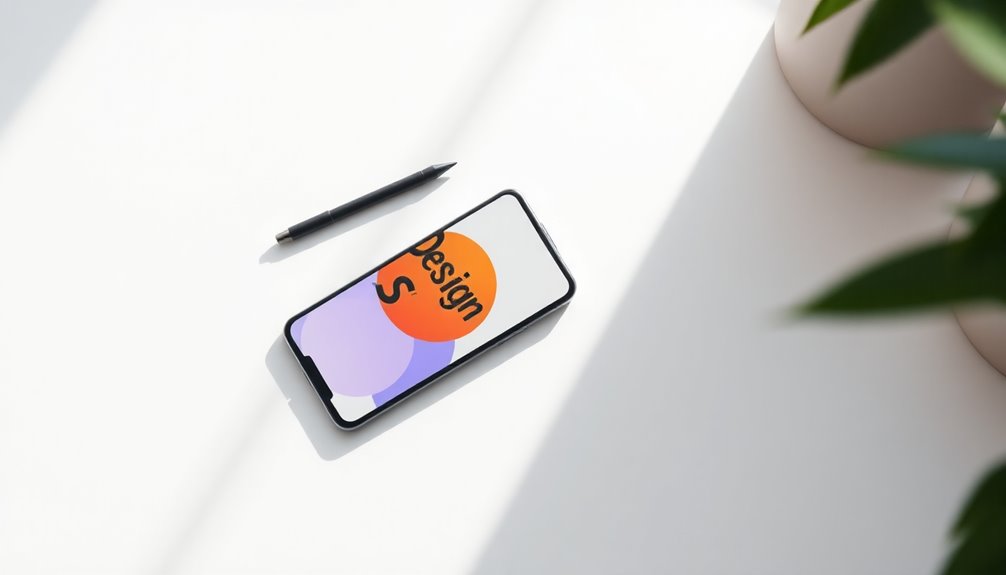
When you're on the go, having the right mobile design apps can make all the difference. Apps like Canva and Adobe Express offer intuitive features that let you create stunning minimalist designs without any hassle. Plus, with tools like Procreate and Affinity Designer, you can bring your artistic visions to life anytime, anywhere. Additionally, utilizing these apps can help improve your cognitive development as you explore new creative techniques and enhance your design skills.
Best Mobile Design Apps
Looking for the best mobile design apps to enhance your creativity on the go? You've got some fantastic options that serve as powerful creative tools for creating stunning visual content.
Here are three top picks:
- Canva – This user-friendly software is perfect for creating graphics, presentations, and social media posts with its extensive library of customizable templates.
- Adobe Spark Post – A part of Adobe's suite, it allows you to create eye-catching social media graphics with access to their vast asset library.
- Procreate – Exclusive to iPad, it offers a natural drawing interface and customizable brushes, making it a favorite for digital artists.
These best mobile design apps are your one-stop shop for on-the-go creativity! Additionally, leveraging mobile responsiveness in your designs will ensure that your content looks great on any device.
Features for Mobile Creatives
Mobile design apps have transformed the way creatives work on the go, providing the tools needed to produce stunning visuals anytime, anywhere.
With user-friendly interfaces and extensive libraries of templates, apps like Canva and Adobe Express make it easy for minimalist creatives to create professional designs quickly.
Procreate stands out for digital artists, offering customizable brushes and an intuitive interface.
Figma's mobile compatibility enhances design workflows through real-time collaboration, keeping teams synchronized even remotely.
Serif Affinity Designer 2 boasts powerful features for both vector and raster graphic design, rivaling desktop applications.
Additionally, Adobe Photoshop and Illustrator on mobile keep essential functionalities intact, allowing you to edit and create high-quality graphics effortlessly, wherever you are.
These mobile design tools often incorporate advanced technology offerings that improve the overall user experience and efficiency.
Integrating AI in Minimalist Design Workflows
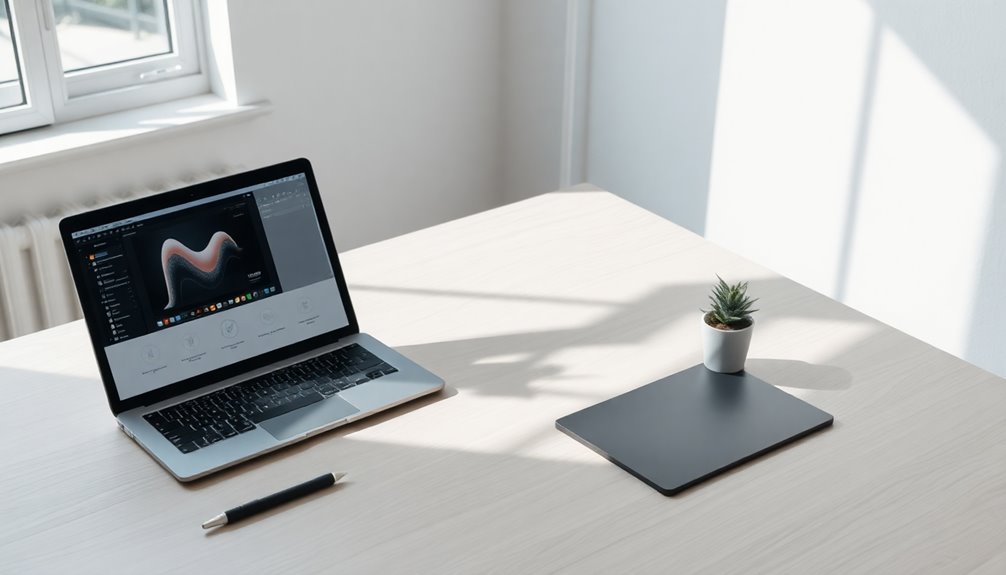
Integrating AI into minimalist design workflows transforms how you create and collaborate.
By leveraging AI tools, you can streamline your processes and enhance your creativity.
Here are three ways AI can elevate your minimalist design experience:
- Automated Editing: AI software like Adobe Firefly and Canva's Magic Design automates repetitive tasks, letting you focus on creativity.
- Instant Visuals: Use AI-driven image generators, like HubSpot's AI Image Generator, to quickly create clean visuals from text prompts.
- Real-Time Collaboration: Tools like Figma and Adobe Express facilitate seamless collaboration, allowing users to share and refine designs efficiently.
With AI features, you can maintain a cohesive aesthetic, saving time while adhering to minimalist principles in your creative work. Additionally, employing digital tools can further enhance your design presentations and workflows.
How to Choose the Right Clean Design Tool
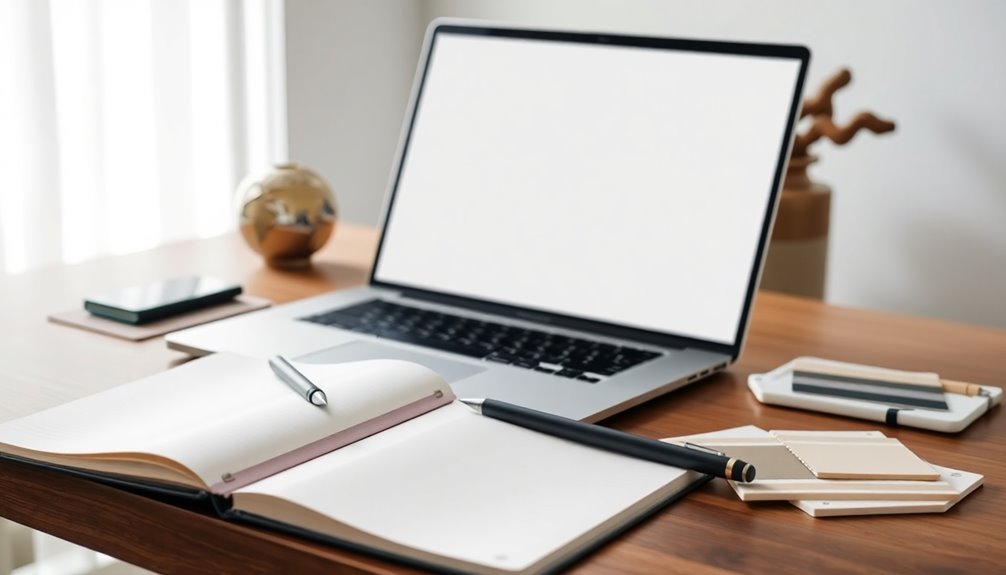
Choosing the right clean design tool can be a game-changer for your projects, especially when you consider your specific needs and preferences. Start by evaluating your design requirements and the best use of each tool.
Selecting the ideal design tool tailored to your needs can significantly enhance your project outcomes.
For instance, Adobe Illustrator excels in vector graphics, while Canva offers user-friendly designs for quick projects. Examine pricing models; some tools, like Serif Affinity Designer 2, have one-time purchases, while others, like Adobe, typically require subscriptions.
Look for features that support clean design aesthetics, such as customizable templates and intuitive drag-and-drop functionality.
Finally, consider your skill level—opt for extensive design software like CorelDRAW if you're advanced, or simpler options like Microsoft Designer if you're just starting out. Additionally, proper planning in your design process can help avoid costly errors and maximize the effectiveness of your chosen tools.
Frequently Asked Questions
What Are the Benefits of Using Minimalist Design Tools?
Using minimalist design tools simplifies your creative process.
You'll find it easier to focus on essential elements, reducing distractions and enhancing clarity. These tools streamline your workflow, allowing you to create visually appealing designs efficiently.
By prioritizing simplicity, you can foster a stronger connection with your audience, as clean layouts often communicate messages more effectively.
Plus, minimalism often leads to faster load times and improved user experiences, making your designs more impactful.
Can Clean Design Tools Enhance Brand Identity?
Absolutely, clean design tools can enhance your brand identity.
By simplifying your visuals, you create a strong, memorable impression. These tools help you focus on essential elements, ensuring your brand message is clear and consistent.
When you use minimalistic designs, you're likely to evoke emotions and foster connections with your audience. A streamlined aesthetic reflects professionalism and trust, making it easier for customers to recognize and relate to your brand.
How Do Minimalist Designs Improve User Experience?
Ever notice how a cluttered room makes it hard to focus? The same goes for minimalist designs.
When you strip away distractions, you create a clearer path for users to navigate. Simple layouts guide their attention, making it easier to find what they need.
Plus, when everything's organized, it feels less overwhelming.
Are There Specific Industries That Benefit From Clean Design Tools?
Absolutely, certain industries thrive on clean design tools.
For instance, tech companies often use minimalist aesthetics to enhance usability, making their products more intuitive.
In the fashion industry, clean designs help highlight the clothing and accessories without distractions.
Similarly, in healthcare, straightforward layouts guarantee that essential information is easily accessible.
What Skills Are Needed to Use Minimalist Design Software Effectively?
To use minimalist design software effectively, you'll need a solid grasp of fundamental design principles. Understanding balance, contrast, and typography is essential.
You should also be comfortable with color theory and have a keen eye for detail. Familiarity with user interface (UI) design can elevate your work.
But that's not all—you're going to need creativity and the ability to simplify ideas without losing their essence.
Ready to plunge into and explore these skills?
Conclusion
In the world of minimalist design, the right tools can be your compass, guiding you through the creative landscape with ease. Whether you're diving into free options or investing in powerful paid software, remember to focus on user experience and collaboration features that enhance your workflow. As you explore these clean design tools, you'll find that simplicity isn't just a style; it's a strategy for releasing your creativity. Now, go create something stunning!
